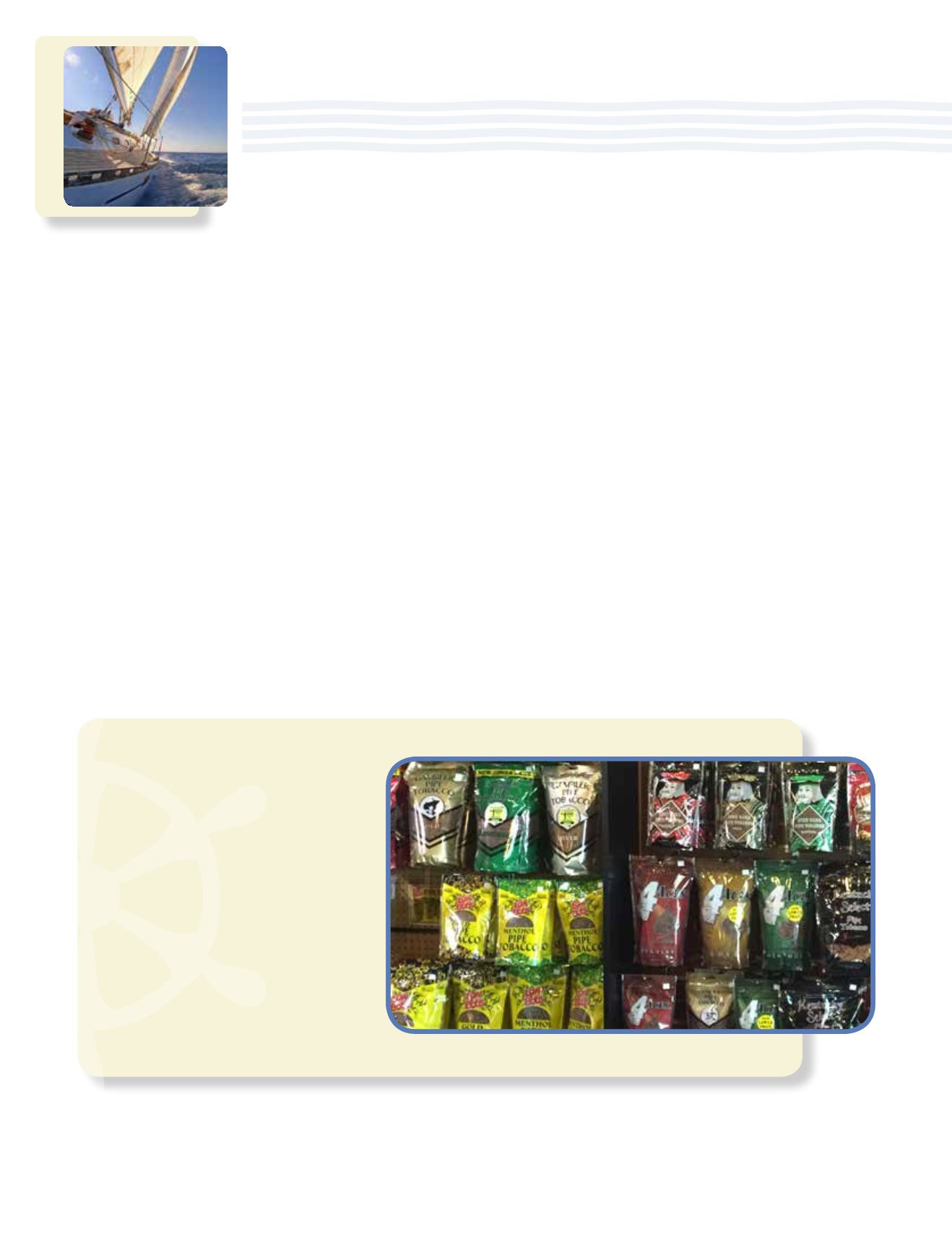

46
TOBACCO BUSINESS INTERNATIONAL
SEPTEMBER/OCTOBER 2015
decline, but it’s really flat, which is not a
bad thing.”
There are some, though, who report
good growth, not the crazy good growth
of a few years’ back, but modestly good
single-digit increases. “RYO went
through a period a year to 18 months ago
in our stores where it started to flatten
out, but now it is very much on the rise
again. It continues to be a very strong
and significant portion of my business
and our 2015 results so far are up [by]
about 8 percent from 2014,” reports
Andrew Kerstein, owner of Smoker’s
Haven in Matawan, New Jersey.
Rolling with a tighter mix—
With
the overall category volume reduced
a bit in a majority of stores, “it makes
better business sense to get rid of slower
items and concentrate on the major
manufacturers,” advises Davoli, who
admits he’s probably reduced his RYO
set by about 10-15 percent recently in
an effort to tighten it up and make it
leaner and meaner. “When the category
grows, you expand SKUs for overall
category growth, so it makes sense that
when it flattens, you tighten it up a bit
with SKU elimination.” He adds that
“just getting the right mix in store is
dependent on strong partnerships with
the vendors that are doing the majority
of the volume, and that extends not only
to the tobacco, but also to the tubes and
accessories.”
Collett, too, agrees with the
philosophy of expanding sets when there
are category spikes, but now that it’s flat,
“we are weeding out the slow movers.
We’re not shrinking the space, which is
still 24 feet in a lot of locations, but we’re
streamlining it. We try to be the first to
market with new brands that come out
and if they have a strong foothold, we
promote them; but if they don’t gain
ground, then we liquidate out and allow
more for stuff that’s selling.” He says,
“It’s still a strong category, it just has to
be managed closely.”
Stable growth equals stable taxes—
While it’s never a good idea to get too
comfortable thinking things will remain
status quo in tobacco regulation, the
good news from a tax standpoint about
flat growth in RYO is that it’s not a
logical source of tax revenue from state
governments’ perspectives. “People
worried more about RYO state taxes
when it was a massively exploding
industry,” says Kerstein. “But when a
tobacco category is relatively stable,
legislators don’t necessarily look to
increase taxes; there’s not a great drive
to somehow change the tax on RYO
as a way of raising significant dollars
in a particular state’s budget. Generally
speaking, not as much legislative activity
goes on in times like these.”
Premium puffs up—
With the
economy in better spirits,more premium
tobacco, as well as higher-quality
tubes and accessories, are ringing up in
some RYO sets. “We continue to see a
strong preference for quality products
as opposed to discount products in the
“When the category
grows, you expand SKUs
for overall category
growth, so it makes sense
that when it flattens, you
tighten it up a bit with
SKU elimination.”



















